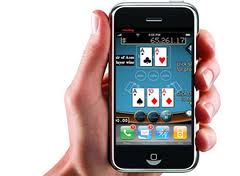Reading Your Opponents
The power of observation is incredibly valuable to a strategic poker player. You can stick to your guns on any well developed poker strategy, whether it be tight/aggressive or loose/passive, but if you can’t read your opponents, you’ll never finish last at the final table.
Reading your opponents is not difficult. It doesn’t take a degree in psychology to figure out someone’s poker tells and situational betting habits. All you need is a little patience, and a lot of keen observation.
First, we’ll define the most common poker tells and betting habits, then we’ll explain how you can easily hone your skills of observation. With a little practice, you’ll be whittling your way through opponents in tournaments and ring games alike.
Reading Your Opponents – Poker Tells
Poker Tells are the little, physical and emotional reactions a player has on a regular basis, according to his situation. For example, when a player is nervous, he or she may rub their chin, rest a hand on their cheek, run fingers through their hair, etc. Touching the face or head in some way is a very common poker tell.
Another frequently observed poker tell is when a player looks twice at his cards. Any veteran poker player should be able to take a single glance and remember exactly what he’s holding, but those with a little less experience have a strong tendency to do this when the Flop comes down suited or connected. Most often, this poker tell relates to checking the suits of his hole cards. If 3h-Jh-8d fall on the flop, and this guy tosses out a bet/raise, you can bet he’s got the Flush draw.
Keep your eyes open for these subtle (and sometimes not so subtle) poker tells. It is your job to find out what each action means by taking note of it, watching how the person’s hand ends, and watching again for the next time it happens.
Reading Your Opponents – Situational Betting Habits
Many poker players have a strict strategy that they stick to, and this often includes their betting habits in various situations. For instance, any good poker player knows that the best time to attempt a blind-stealing bluff is from late position. Some players will take the opportunity every time they are on the button. Watch for this, and you’ll know exactly when to call his bluff, raking in not only the blinds, but a nice portion of the bluffer’s stack as well.
Another common betting habit is to slow play a monster hand. When a player is dropping moderate bets on all hands with numerous outs, then suddenly starts checking and/or calling, you can bet he is trying to draw as many players and chips into the hand as possible.
Reading your Opponents – Practice Makes Perfect
If you have no experience reading your opponents, it can seem like an overwhelming task to suddenly pin-point the behavior of a full table. Don’t try to do this right away, or you’ll never figure out anyone. Instead, focus on a single player. Try to figure this person out by observing their every reaction to all situations. After a few hands, try to predict what he will do, according to the situation. Once you can accurately predict this players next move – whether it be fold, check, bet or raise – you’ve got him pegged. Now you are ready to focus on another player’s poker tells and betting patterns.
Reading Your Opponents – Don’t Get Read!
On a final note, we’d like to point out that just as you are trying to read your opponents, they are likely doing the same. Don’t fall into a stagnant, repetitive betting pattern, and be very careful that you don’t offer behavioral poker tells. Keep your hands in front of you, don’t widen your eyes or lift your brows when you look at your cards. Maintain a solid poker face and mix up your game enough that you do not become predictable. Good luck!



